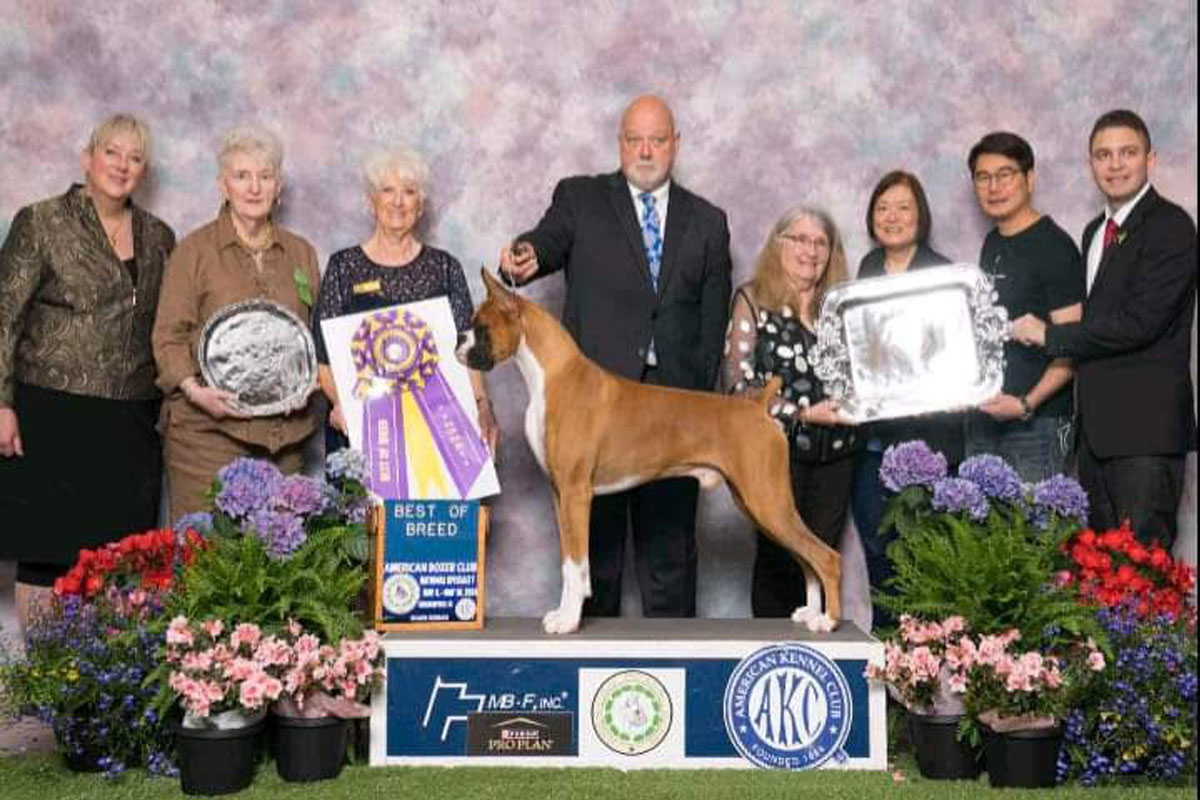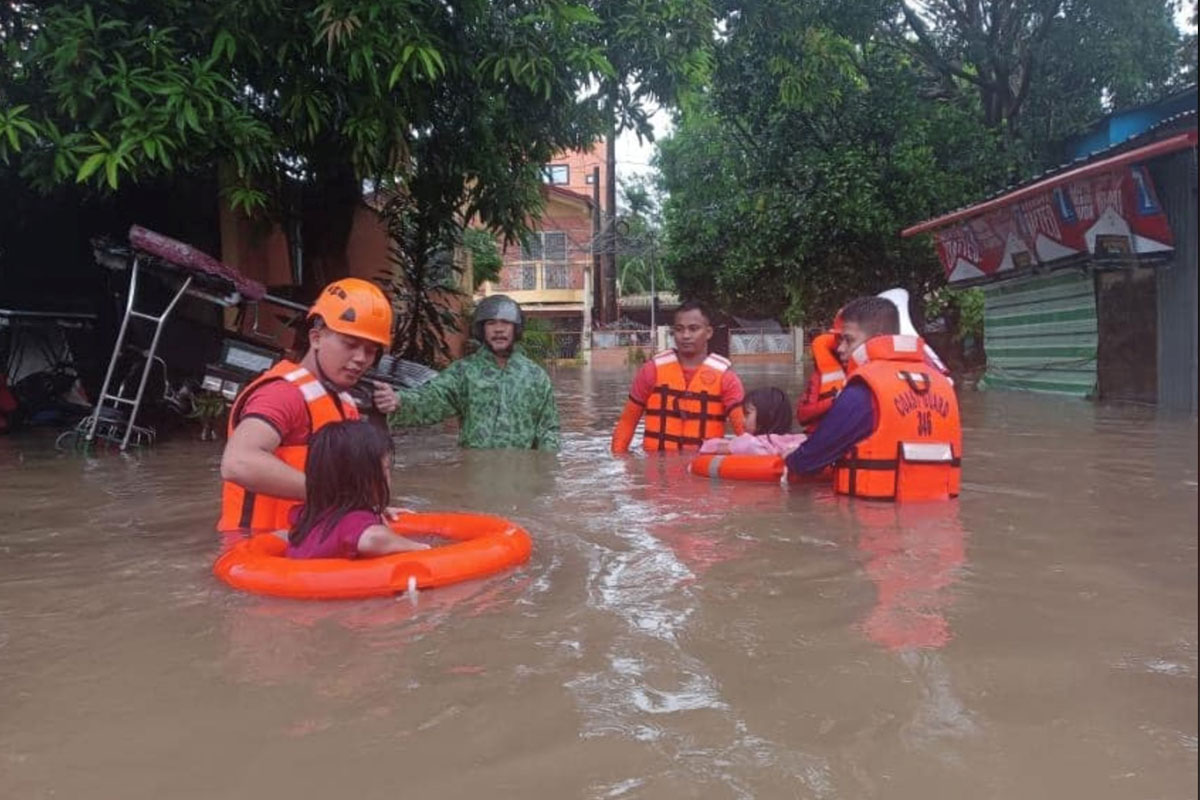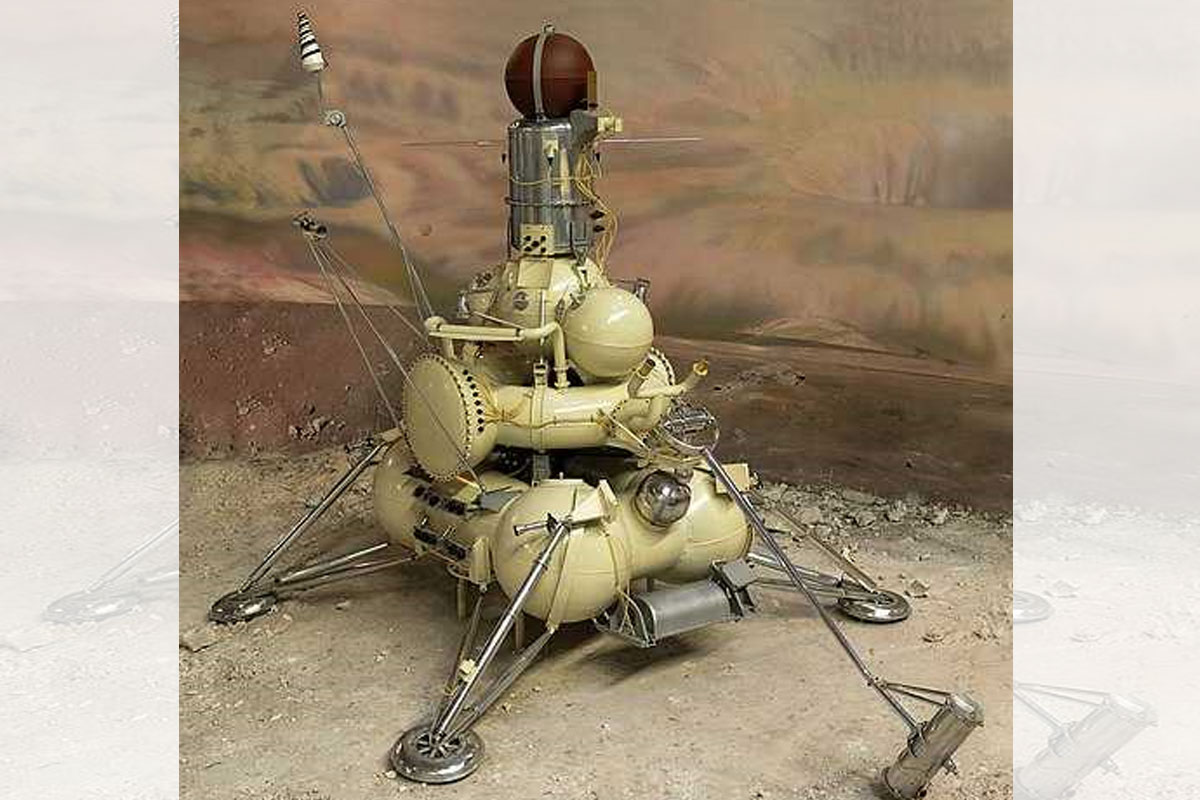
There Was Life On Moon, USSR Spacecraft Returned To Earth With Evidence In 1970
By Vicky Verma
During the Cold War, the United States and the USSR had tremendous pressure to win the space race. The Soviet Union was the first to land its spacecraft on the Moon and definitely the first to launch a satellite in space. Their Luna-2 became the first unmanned spacecraft to land on the Moon on September 13, 1959.
In 1966, the USSR accomplished the first soft landings and took the first pictures from the lunar surface during the Luna-9 and Luna-13 missions. The U.S. followed with five uncrewed Surveyor soft landings. Moreover, the Soviets’ Luna-16 space probe returned to Earth with the lunar soil, containing the evidence of alien life which allowed scientists to answer many questions about the origin and evolution of the solar system.
On September 24, 1970, for the first time, an unmanned spacecraft delivered a lunar “soil” sample to Earth. The Soviet Union’s Luna-16 spacecraft returned from the moon’s Sea of Fertility with 101 grams of lunar regolith in a hermetically sealed container.
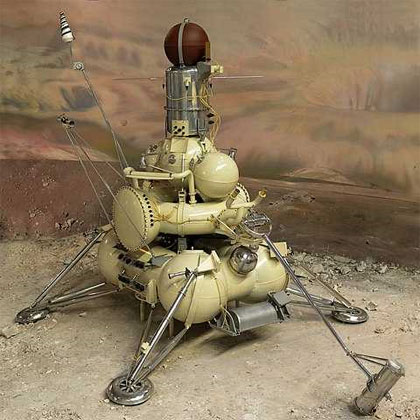 Luna 16. Image credit: Wikimedia Commons
Luna 16. Image credit: Wikimedia Commons
In February 1972, only 120 kilometers from the Luna-16 site, Luna-20 used a drill with a ten-inch, hollow-core bit to collect another regolith sample that was also hermetically sealed on the moon. Back in the USSR, the sealed containers from the Luna missions would be promptly delivered to the laboratory for the contents to be examined and photographed. But even after hundreds of the pictures were published in an atlas in 1979, the biological nature of some of the particles was not noticed.
Note: Luna-16 was created by the design group of the NPO named after S.A. Lavochkin under the leadership of Georgy Nikolayevich Babakin.
On November 17, 1970, Soviet scientists prepared a report on the preliminary results of a study of the physical properties of the lunar soil. On December 21, the order of the Minister of General Mechanical Engineering of the USSR was published, according to which bonuses were awarded to developers and manufacturers of ground-based space infrastructure facilities. (Documents concerning the lunar program of the USSR were made public in 2020)
Read also:
o Mystery Of Apollo 11 Alleged UFO Encounter On Mo on In 1969: NASA Joined UFO Investigation, Why?
o Giant UFO Rotating Seen By 400 School Students & Teachers In New Zealand
o Did Nikola Tesla Help US Navy Build An Invisibility Device For Their Warships?
o Dulce Base Mystery Continues, UFO Researchers Open Up About Underground Alien Facility In New Mexico
Further studies of the images were conducted by biologists from the Russian Academy of Sciences, Stanislav Zhmur, Institute of the Lithosphere of Marginal Seas, and Lyudmila Gerasimenko, Institute of Biology.
The scientists noted that some of the particles in the photos were virtually identical to fossils of known biological species on Earth.
Specifically, they noted some spherical regolith particles, where the material brought back by Luna-20 was very similar to fossils of coccoidal bacteria like Siderococcus or Sulfolobus in their scale, distribution, form, and the distortion of the spheres that occurs during fossilization.
Organic fossils on the lunar surface
The Luna-16 regolith contained a fossil whose striking morphology was not overlooked by the editors of the 1979 atlas. Because of its concentric circular form with strong spokes, they guessed it was a tiny meteorite crater. But Zhmur and Gerasimenko saw the fossil’s unmistakable resemblance to modern spiral filamentous microorganisms like Phormidium frigidum, found in growing stromatolites in Shark Bay, Australia, and to spiral filamentous microorganisms from early Proterozoic shiungites of Karelia.
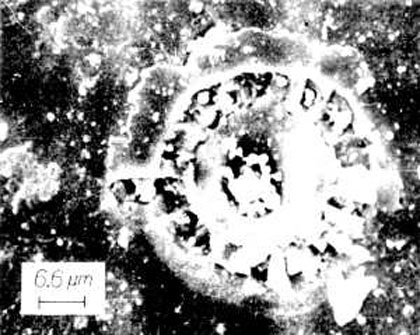 Luna 16: A silicated fossil found in lunar regolith similar to modern spiral filamentous microorganisms such as Phormidium frigidum.
Luna 16: A silicated fossil found in lunar regolith similar to modern spiral filamentous microorganisms such as Phormidium frigidum.
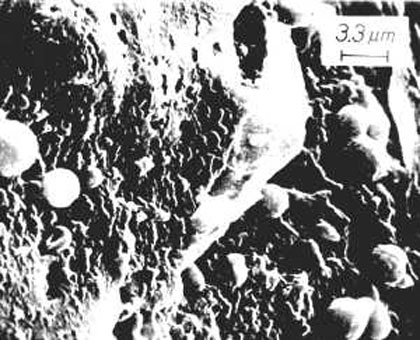 Luna 20: Fossils similar to modern coccoidal bacteria Siderococcus or Sulfolobus, lithified by metalic iron.
Luna 20: Fossils similar to modern coccoidal bacteria Siderococcus or Sulfolobus, lithified by metalic iron.
Their new analysis of these particles was announced at an astrobiology conference in Denver, July 20-22, 1999, and published in the conference proceedings in December 1994.
At the same Denver conference, Zhmur and Gerasimenko also announced the finding of biological microfossils in several carbonaceous meteorites from far beyond the moon. “We considered the fossils in meteorites to be their most newsworthy finding and, on 27 January 2000, we posted pictures from two of the meteorites on this website.” Although no one has disputed the biological nature of those microfossils, a nullifying consensus subsequently developed.
In March 2000, at the Lunar and Planetary Science Conference held in Houston, evidence of contamination was reported in all carbonaceous and Mars meteorites that were examined for it. Because germs on the ground and on people’s hands can easily colonize meteorites before they are examined, and because fossilization can happen in only days, fossilized microorganisms in meteorites are now widely suspected to be the remains of recent, earthly contaminants.
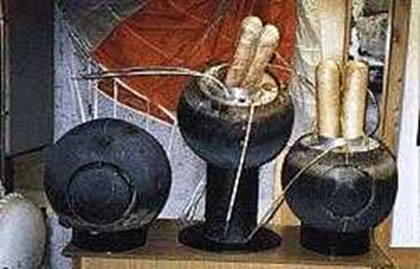 Luna 16, 20, 24: Sample return capsules on display at the NPO Lavochkin Museum.
Luna 16, 20, 24: Sample return capsules on display at the NPO Lavochkin Museum.
The microfossils from the moon are different. Each Luna sample was encapsulated on the moon and opened only in a laboratory where examination commenced immediately. Could these fossils be solid evidence of ancient life elsewhere in space?
How&whys.com



